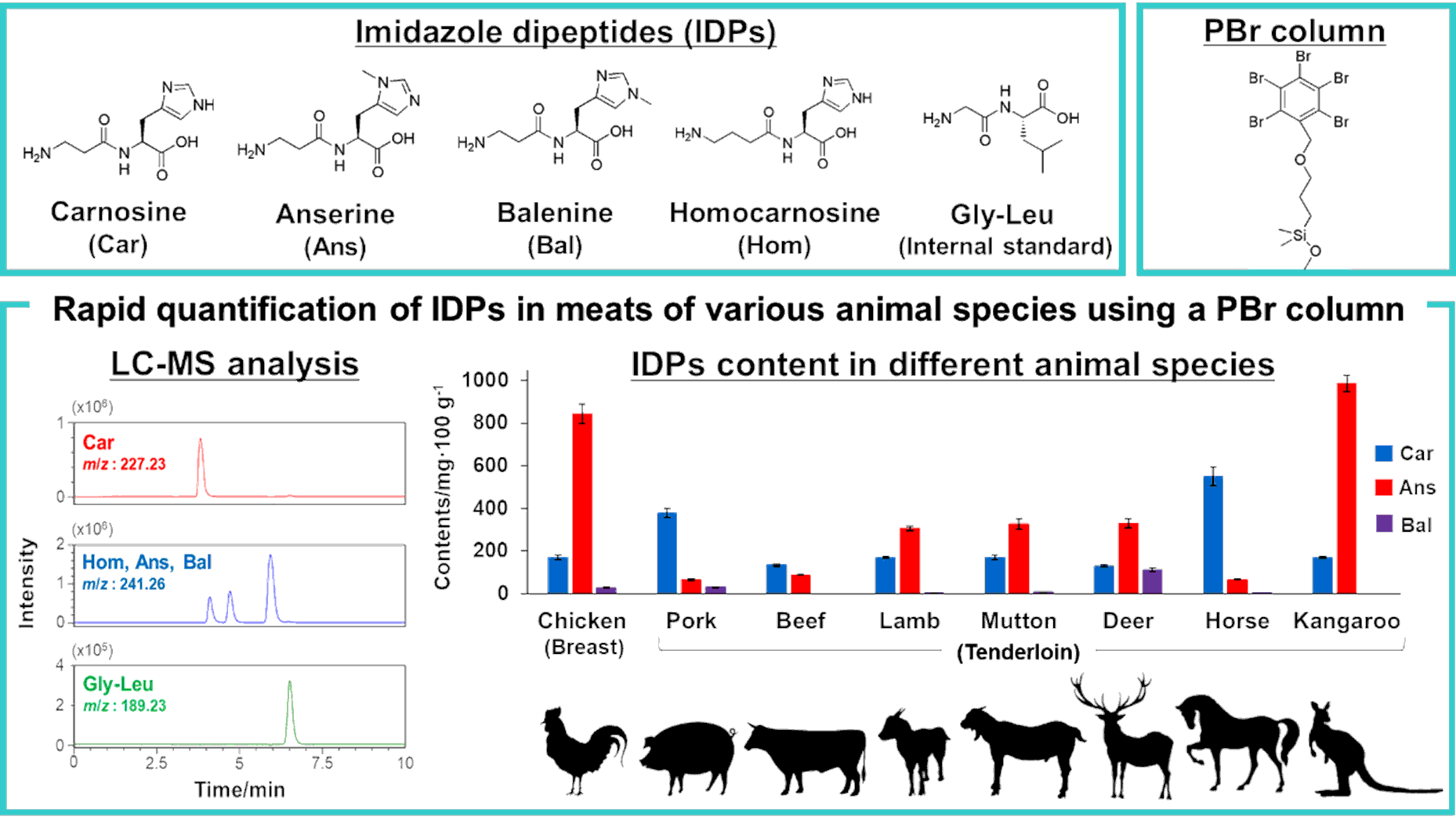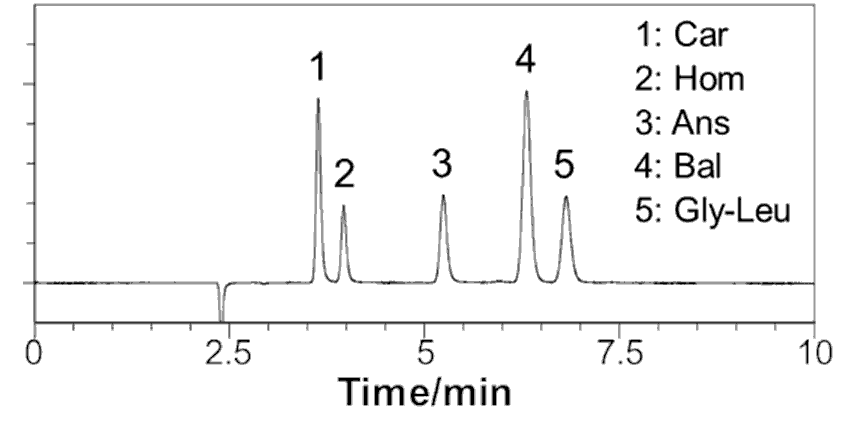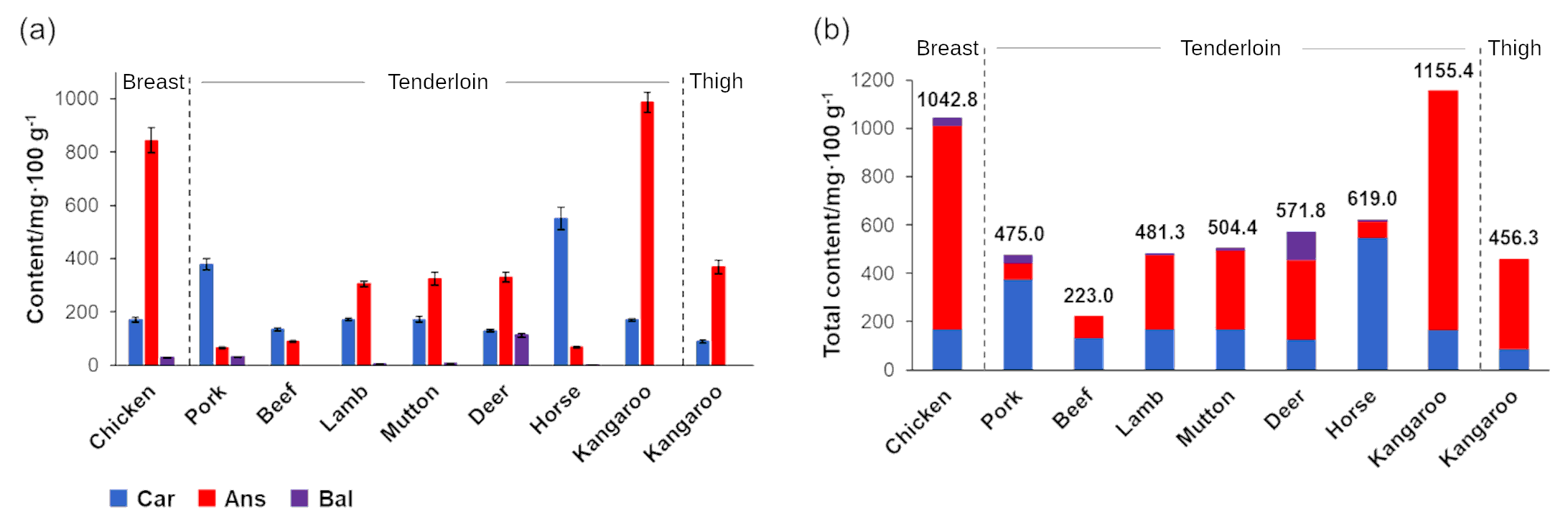Paper published: Rapid separation and quantification of imidazole dipeptides
Our paper on the separation of imidazole dipeptides (IDPs), written in collaboration with Dr. Shozo Tomonaga of Kyoto University, has been published in the Journal of Chromatography B.
Publication information
Title: Rapid separation and quantification of imidazole dipeptides in meats using a PBr column packed with 3-(pentabromobenzyloxy)propyl group modified silica gel
Authors: Makoto Ozaki1, Tomomi Nakade1, Yasunari Yamada1, Tsunehisa Hirose1, Motoshi Shimotsuma1, Shozo Tomonaga2
Affiliations:
[1] Nacalai Tesque, Inc.
[2] Division of Applied Biosciences, Graduate School of Agriculture, Kyoto University
Journal:
Journal of Chromatography B, 1262, 124660 (2025).
https://doi.org/10.1016/j.jchromb.2025.124660
Summary
In this paper, we develop a method for the rapid separation and quantification of underivatized IDPs from the meats of various animals in less than 10 min. using our column COSMOSIL PBr and LC-MS (Fig. 1).

Fig. 1. Overview of this research.
By using our PBr column, it was possible to separate 4 types of IDPs (carnosine [Car], anserine [Ans], balenine [Bal], homocarnosine [Hom]) that are difficult to separate on C18 columns with resolution (Rs) > 1.5 (Fig. 2).

Fig. 2. Chromatogram of IDPs and internal standard Gly-Leu using COSMOSIL 3PBr column (3.0 mm I.D. × 150 mm). Detection wavelength: 220 nm.
Using glycine-L-leucine (Gly-Leu) as the internal standard, we quantified IDPs in various meats using a single quadrupole LC-MS and found that there was a large difference in the IDP content between different animals. Car was abundant in horse tenderloin (550.0 ± 42.3 mg/100 g) and pork tenderloin (378.8 ± 20.0 mg/100 g) Ans in kangaroo tenderloin (986.3 ± 37.7 mg/100 g) and chicken breast (843.6 ± 46.1 mg/100 g), and Bal in deer tenderloin (112.5 ± 7.9 mg/100 g) (Fig. 3a). Overall abundance of IDPs was, from highest to lowest, kangaroo (tenderloin) > chicken > horse > deer > mutton > lamb > pork > kangaroo (thigh) > beef (Fig. 3b). For all meat samples, analytical precision was good, with relative standard deviation (RSD) less than 15%. Additionally, intraday and interday reproducibility for each IDP was evaluated using chicken breast samples, and RSD was found to be less than 15% for all components.

Fig. 3. (a) Abundance of individual IDPs in meats of various animals, (b) Total IDPs present in meats of various animals.
Products used in this paper
Related references
Ozaki M, Nakade T, Sekiguchi M, Shimotsuma M, Hirose T, Kawase T, Tsuji A, Kuranaga T, Kakeya H, Tomonaga S. Simultaneous Analysis of Imidazole Dipeptides, Constituent Amino Acids, and Taurine in Meats Using the Highly Sensitive Labeling Reagent L-FDVDA and PBr Column, Journal of Agricultural and Food Chemistry. 2024 Nov 26; 72(49), 27538-27548.
https://doi.org/10.1021/acs.jafc.4c07391 Featured on Supplementary Cover
Ozaki M, Shimotsuma M, Hirose T, Separation of Nicotinamide Metabolites Using a PBr Column Packed with Pentabromobenzyl Group Modified Silica Gel, Analytical Biochemistry. 2022 Oct 15; 655, 114837.
https://doi.org/10.1016/j.ab.2022.114837




